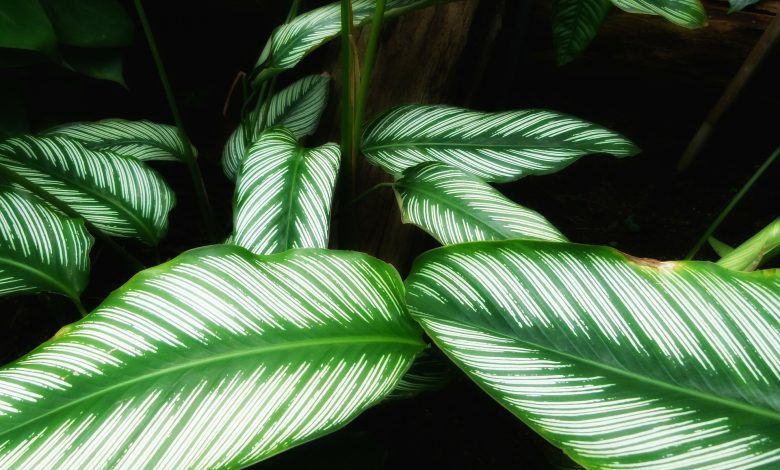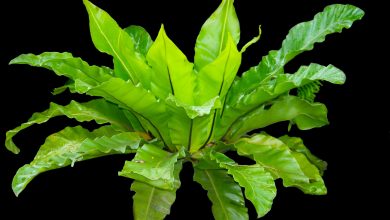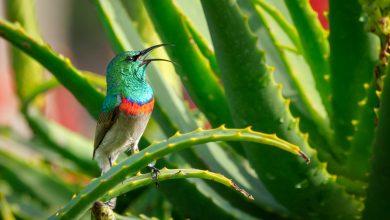Calathea Ornata: How to Care for the Pinstripe Plant

The Calathea ornata, also known as the pinstripe plant, looks as though it comes straight out of a painting. The white stripes on the green leaves appear to be artfully decorated, making this plant an ideal addition to any room in your house that you want to spruce up. Lustrous pinstripe plants make for great gifts, and with a little practice, they can be grown into a vibrant maturity. Below, we’ll go over how to care for the pinstripe plant and further detail its unique characteristics.
Origin of the Pinstripe Plant
The Calathea ornata is originally a tropical plant that is native to South America, Central America, Africa, and Thailand. There are over 300 types of Calathea plants with more arriving every year thanks to new hybrid cultivations.
The effervescent green leaves of the Calathea ornata can lead people to mislabel it as the zebra plant, peacock plant, and cathedral plant, all of which we will cover below. It’s also sometimes confused with the prayer plant, the Maranta leuconeura, which similarly has striking stripes, but the stripes are a deep shade of pink on the prayer plant.

Flowering and Foliage
An evergreen perennial, the Calathea ornata has standout features beyond its white-striped leaves. As a plant that opens its leaves in the morning and folds them back up at night, the Calathea ornata is known as a living plant. When the plant senses a change in lighting, its stems and leaves are activated to soak up the sun’s rays. Amazingly, if the timing is right, you may actually hear the plant as it opens up in the morning or closes at night.
Contrasting with radiant white pinstripes on top of dark green leaves can be a colorful underside that ranges from red to purple. Typically, Calathea ornata plants that are developed for indoor use feature a violet underside. Unfortunately, this plant does not flower very often when grown indoors.
How to Care for Calathea Ornata
With its tropical origins, the Calathea ornate is best used as an indoor plant due to its need for a constant warm temperature. The pinstripe plant can grow easily in U.S. hardiness zones 10 and 11, but that restricts its outdoor growth to only certain parts of southern California, the southern tip of Florida, and Hawaii. The plant will typically grow as much as two feet tall and two feet wide when grown indoors.
The growing season for the pinstripe Calathea is from early March to late October. Fertilize the plant once a month throughout the growing season.
Sunlight
The Calathea ornata is not shy about its affection for warm temperatures, but it does not develop well in direct sunlight. Its preference for a lightly shaded area is one of the aspects that makes the pinstripe Calathea a prime choice for growing indoors. Be sure to place your plant in an area that gets just indirect sunlight. An extended period of direct sun will begin to fade the color from the leaves.
Properly maintaining the amount of sunlight the plant receives will be a determining factor for reaching full maturity in good health. As the sun changes positions in the sky throughout the year, you should be continually monitoring the amount of sun the plant receives.
Water
You should water your Calathea ornata regularly throughout the spring and summer. Make sure that the soil is always moist during these warmer months. Water the plant less frequently during the colder months.
Soil
A porous potting mix is preferred, and a typical peat moss based potting mix will get the job done. Look for a potting mix that is two parts peat and one part perlite.
Fertilizer
Fertilization will vary whether you are growing your plant indoors or outdoors. Fertilizers often have three numbers printed on them, such as 10-10-10. These numbers represent nitrogen, phosphorus, and potassium. An example of 10-10-10 means that there are .10 pounds of nitrogen, .10 pounds of phosphorus, and .10 pounds of potassium in the mixture. If you hear a fertilizer described as “balanced,” it means that all three numbers are the same.
Try to use a liquid 15-15-15 fertilizer for your Calathea ornata. If you can’t find a pre-mixed liquid, take one-quarter teaspoon of the fertilizer and mix it with one quart of distilled water. Make sure that you have deeply watered the plant before feeding it with fertilizer to prevent root burn. Each month, replace one watering session with the fertilizer solution.
Temperature
Pinstripe Calathea plants will thrive in temperatures between 65 and 85-degrees Fahrenheit with high humidity. You may not have much control over the humidity of your house, but if you do happen to live in a region such as south Florida, you are in a prime position to grow these plants outdoors.
Toxicity
The pinstripe Calathea has no toxicity to humans, cats, or dogs, so if a curious furry friend takes a bite, there is no cause for alarm.
Propagation
This plant can be propagated by using the division technique. The division method is when, at repotting time, you divide the plant into two separate parts. The new division is typically smaller than the original plant, but make sure to have a decent clump of both leaf stalks and roots. To keep the new division warm, cover it with thin polythene plastic until you start to see new growth.
Pests
Mites, mealybugs, and caterpillars are the main pests to keep out of your Calathea. Caterpillars will eat holes through the leaves, while mites and mealybugs can cause infection by feeding off the sap of your plant’s stems. The best deterrent to these pests is to wipe the plant down with rubbing alcohol every now and then.
Other Varieties of Calathea Plants
Of the 300+ varieties of Calathea plants, here are six plants worth considering alongside the ornata.
Calathea Orbifolia
Scientific name: Calathea orbifolia
The Calathea orbifolia is a rare gem that looks very similar to the Calathea ornata with its white stripes decorating vibrant green leaves. However, the difference between the two can be seen in the size and color of the stripes. The orbifolia’s white stripes can appear blueish or almost metallic. They are also much bigger in size than the ornata’s delicate white stripes. The leaves on the orbifolia are also much rounder and grow quite wide when the plant fully matures.

Rattlesnake Plant
Scientific name: Calathea lancifolia
The rattlesnake plant used to go by the name of Calathea insignis, so if you see that scientific name, these two plants are the same. Originally from Brazil, the rattlesnake plant’s leaves feature a pale, almost lime green background, which is highlighted with beautiful green markings that follow a specific pattern of large alternating with small. The green markings grow at a 45-degree angle up from the rib of the leaves, and the coloring on top contrasts wonderfully with its reddish-purple coated underside.
Eternal Flame
Scientific name: Calathea crocata
The eternal flame plant is one of the most unique varieties of Calathea plants. Sometimes confused with the rattlesnake plant, it features spikes that are about two inches long, which are bursting with orange flowers at the tips, making the spikes appear like tiny torches. Its leaves grow to about six inches long and are dark green on top with a purple bottom. The rattlesnake plant will grow up to ten inches high and one foot wide.
Unfortunately, its performance as a houseplant is hit or miss, as the rattlesnake plant prefers high humidity and performs best in a greenhouse.
Zebra Plant
Scientific name: Calathea zebrina
The zebra plant can grow quite large, getting as high as 13 feet in height and about the same width. Its leaves can grow 12 feet long and six feet wide. Originally from Mexico, the zebra plant features a soft green surface with pale yellow and olive stripes on top. If grown outdoors, the zebra plant will bloom with small purple and white-colored flowers.

Peacock Plant
Scientific name: Calathea makoyana
The largest growing plant in the Calathea family is the peacock plant, which can grow up to 24 feet high and wide in the wild. As a houseplant, the makoyana grows much smaller, up to two feet in height. Originally from Brazil, its leaves feature a mix of olive green and cream colors alternating on top, with splotches of pink on the bottom. The green coloring on top of its leaves closely resembles the elegance of peacock feathers. The peacock plant is also known as “cathedral windows.”
Roseolineata
Scientific name: Calathea roseolineata
The Calathea roseolineata will sometimes be called a peacock plant, as well as a pinstripe plant. But the key differentiation on the roseolineata is the pink stripes mixed in with its white stripes. This plant can grow up to six feet tall and three feet wide. As with the ornata, the roseolineata has rich green leaves with a deep red or purple underside. When this plant is younger, its pink stripes will show up between the veins of the leaves and are framed by white stripes.



